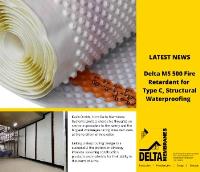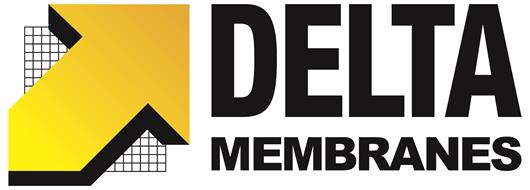 Add My Company
Add My Company
Sign In

Kevin Dodds, from Delta Membrane Systems Limited, shares his thoughts on sector approaches to fire safety and the biggest challenges facing manufacturers at the forefront of innovation.
Two key changes in fire safety have been the Department for Levelling Up, Housing and Communities launching the Building Safety Programme (a programme to establish residents of high-rise buildings are safe and feel safe, now and in the future), and following public consultation in 2020, the new amendments to both legislation (Regulation 7 of the Building Regulations) and statutory guidance (Approved Document B).
Whilst not all building legislation for above ground construction applies to below ground construction, in understanding what factors promote best practice and utilising initiatives can only promote excellence within the waterproofing sector.
Waterproofing
Waterproofing is the prevention of water ingress and the management of water and water vapour movement through and out of a structure. Good design and workmanship are primary factors in achieving waterproof construction.
When choosing the right products for a waterproofing project multiple factors are considered. With the most seasoned of Waterproofing Design Specialist quoting their A, B & C (or a combination of the two).
Means of Escape
Understanding the basics of ‘means of escape’. Whilst not covered in full detail, means of escape should be ‘from a building to a place of safety outside that building’.
A ‘below ground’ structure is classed as being either partially or wholly below ground level (earth retaining). Fires in buildings with basements present a range of logistical and physical challenges for firefighters with fire behaviour in below ground structures often unpredictable.
Whilst fires cannot always be prevented, by using fire-resistant or retardant materials from the outset, occupants of a building will receive the maximum valuable time for the sufficient ability to ensure swift and safe evacuation.
The current landscape
There are many different design challenges experienced when designing a suitable, maintainable, and capable waterproofing system, from a basement to podium deck.
The design and layout of a building, in conjunction with the materials used and style of construction, play a key role in preventing the spread of fire and will allow the safe evacuation of occupants from a building in the event of a fire.
Linking waterproofing design to a successful fire protection strategy involves reviewing construction products and materials for their ability in the event of a fire.
Manufacturing
The legal and ethical importance of product testing cannot and should not be overlooked.
Product testing is commenced on finished products (prior to products leaving warehouses for site).
Product testing puts products through a series of assessments that examine and analyse that products performance, ensuring it meets regulations. Each manufacturer is responsible for ensuring that the product tested “does exactly what it says on the tin” and for relaying that information back to consumers.
The success of any waterproofing project, especially in terms of safety and integrity, relies heavily on product testing.
The demand for sustainable, cost-efficient building methods and materials is constantly increasing, as is the demand for safer building materials. It can be devilishly difficult to distinguish product differentiators. One that offers quality, unique features and benefits should never be underestimated.
The Future
Delta MS 500 Fire Retardant. Going above and beyond best practice is crucial.
When it comes to fire safety and waterproofing, it is important to take a long-term view. Manufacturing innovative products – it will never be ‘done’. It is something that needs to continuously evolve.
For more information on Delta MS 500 Fire Retardant for Type C, Structural Waterproofing talk to Delta Membrane Systems Ltd - Basement waterproofing
Enquire Now
List your company on FindTheNeedle.

